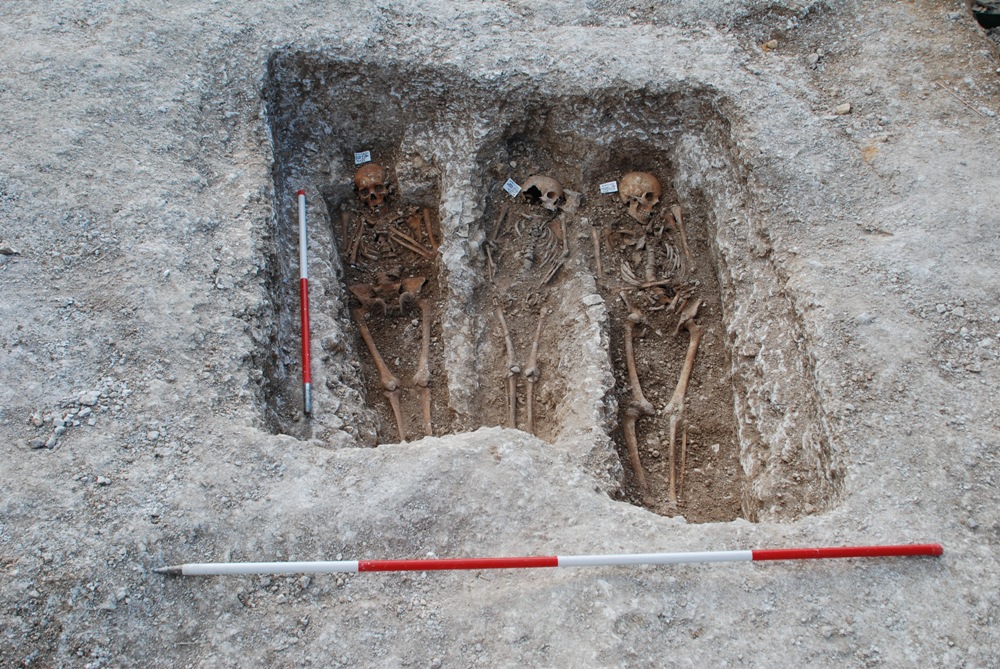Leprosy Remarkably Unchanged from Medieval Times

Leprosy is much less common today than it was during the Middle Ages, but the bacterium that causes this debilitating disease has hardly changed since then, a new study finds.
Reserachers sequenced the surprisingly well-preserved genome of the leprosy bacterium in skeletons exhumed from medieval graves in Europe. It's the first time an ancient genome has been sequenced "from scratch" (without a reference genome), and reveals that medieval leprosy strains were nearly identical to modern leprosy strains.
Leprosy, also known as Hansen's disease, is due to a chronic infection of the bacterium Mycobacterium leprae. The disease causes skin lesions that can permanently damage the skin, nerves, eyes and limbs. While it doesn't cause body parts to fall off, those infected with leprosy can become deformed as a result of secondary infections. The disease often strikes during the peak reproductive years, but it develops very slowly, and can take 25 to 30 years for symptoms to appear. [Top 10 Stigmatized Health Disorders]
The disease was extremely common in Europe throughout the Middle Ages, especially in southern Scandinavia. "It was a major public health problem," said study co-author Jesper Boldsen, a biological anthropologist at the University of Southern Denmark.
But leprosy declined precipitously during the 16th century. To understand why, Boldsen's colleagues sequenced DNA from five medieval skeletons, and from biopsies of living people with leprosy.

Unchanged genome
Normally, sequencing ancient DNA is difficult, because most of it degrades. But one of the medieval skeletons contained a very large amount of well-preserved DNA, possibly because the leprosy bacterium has a very thick cell wall that protects it from degradation. The researchers used an automated technique known as shotgun sequencing to obtain the genetic blueprint from this specimen.
Sign up for the Live Science daily newsletter now
Get the world’s most fascinating discoveries delivered straight to your inbox.
The other skeletons and the biopsy samples, which did not yield as much DNA, were sequenced using a known, "reference" genome.
The sequencing revealed the leprosy genome has remained almost unchanged since medieval times, so the disease hasn't become any less potent. Its decline during the 16th century may have been a result of disease resistance within the human population, the researchers speculate. People who developed leprosy were often banished to leper colonies for the rest of their lives. As a result, the genes of people who were susceptible to the disease would have died out with them, while the genes of more immune people would have survived.
The findings provide insight into the evolution of the disease, said study co-author Johannes Krause, a paleogeneticist at the University of Tuebingen, Germany. "How did the pathogen evolve? How did it adapt to the humans?" Krause said. "This is something only those ancient genomes can tell us."
Leprosy today
Leprosy still afflicts people today, but is treatable with antibiotics. More than 10 million people are infected, and there are about 250,000 new cases every year, Krause told LiveScience.
In addition to humans, the disease infects armadillos, and most leprosy cases in the United States can be traced to contact with these animals. The leprosy bacterium thrives at cool temperatures, and armadillos have the lowest body temperature of any mammal, Krause said.
But the armadillos probably contracted the disease from humans, who originally came from Europe, the study authors said. One of the medieval leprosy samples matched strains from the modern Middle East, but it's unclear whether the disease originally came from there or from Europe.
"This study provides insight into how the European strains of leprosy (now extinct) relate to those found in other parts of the world," anthropologist Anne Stone of Arizona State University, who was not involved in the new study, said in an email. "Surprisingly, it appears to have 'jumped' into humans [from other animals] relatively recently," in the last 3,000 years or so, Stone said.
The study was published online today (June 13) in the journal Science.
Follow Tanya Lewis on Twitter and Google+. Follow us @livescience, Facebook & Google+. Original article on LiveScience.com.











